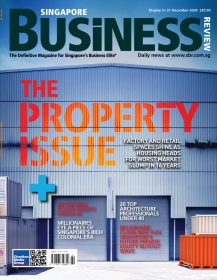
Now you see it, now you don’t: Singapore’s inflation leap likely fleeting, says HSBC
It’s currently at a six-month high.
There’s a certain simplicity to the recent surprise growth in inflation, which can be traced back to the dissipation of base effects from medical subsidies implemented last September, and the reversal of SG50 public transport discounts from August.
A slight pickup in services and retail inflation also helped.
However, analysts say inflation could plummet faster than it shot up.
According to Joseph Incalcaterra of HSBC, now is definitely not the time to pop the champagne just yet, as underlying price pressures are ticking time bombs ready to explode on core inflation on October.
Incalcaterra says the 9.3% cut in electricity tariffs will ultimately lead to a sharp turn in October inflation.
“[The reduced electricity tariffs] should bring core CPI back to the range of 0.2-0.3% y-o-y. However, moving into 2016, base effects and sequential healthcare inflation will result in higher core prices, which we forecast will end the year at 1.8% (near the long-term average),” Incalcaterra said.
Meanwhile, deflationary readings for the headline CPI are set to continue in the near term.
“The headline measure continues to be dragged down by deflating property prices and lower Certificate of Entitlement (COE) premiums for vehicles,” Incalcaterra said.
“Concerning the former, we expect housing prices to continue moderating well into next year. MAS Managing Director Ravi Menon made clear that the central bank is in no rush to dismantle the various macro-prudential tools used to stunt housing price growth and curb household debt,” he added.
Once the Fed starts lifting rates, house prices will start to drop, Incalcaterra says. HSBC experts say this could commence as early as December.
“We reckon it could take a further 10% decline in property prices before any reversal of policy is considered,” Incalcaterra said.
Meanwhile, for private transport prices, the increased COE supply next year should result in steadily lower premiums.
“These two factors may keep the headline CPI reading negative through 1H16, after which the gauge may turn positive on a more sustained basis,” Incalcaterra explained.
























 Advertise
Advertise






